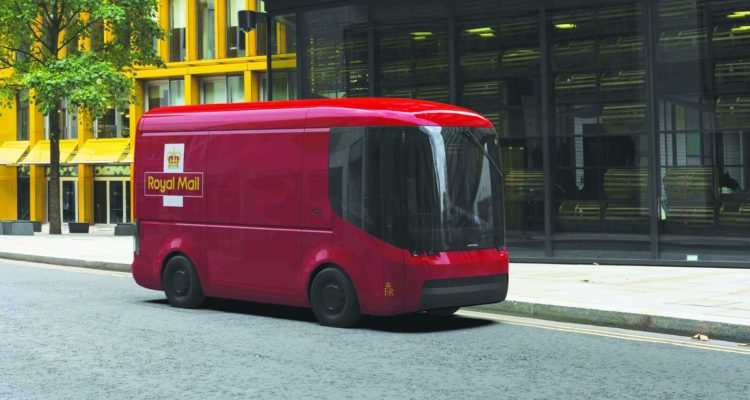Once the vehicle design is complete, cycle time for parts production is very fast. When the parts are ready, it takes just four hours for robots and workers to build a vehicle. Since Arrival can make changes to the van’s body quickly and at low cost, customers can choose the van size, shelving arrangements, door style and so on that they prefer. There’s plenty of room for customization; the Arrival vans have about 40% more cargo space than equivalent fuel-powered vehicles, according to the company. “Designing a vehicle from the ground up and designing it with composite materials facilitates a lot of that,” says Bion.
Aware that commercial fleet customers want to avoid downtime, Arrival has built its electric vans for easy repair. The areas of a vehicle that experience frequent damage from scraping trees, hitting curbs and similar incidents can be easily removed and recycled, and so can larger structural parts. The damaged parts can be recycled and that material reused.
Arrival’s plan is to build 100,000-square-foot production facilities that replicate their assembly process in many locations throughout the world. With that approach, the company will be able to reach large numbers of customers without investing vast amounts of capital or time to get production started.
In the past few years, Arrival has been testing its electric vehicles in the United Kingdom with customers such as the Royal Mail, UPS and John Lewis (a department store chain). The EVs are also being tested in some U.S. cities. These commercial vans are older models, but Arrival will put the newer, built-from-the-ground-up models on the road in 2020.
Arrival doesn’t see the need to focus on autonomous commercial vehicles just yet. However, another part of the company is building Roborace, an autonomous electric vehicle that includes artificial intelligence. Some of the intelligent technology used in Roborace will be incorporated into the commercial EVs. That technology will help keep drivers safer and provide driving data that fleet owners and their insurance companies might want. Arrival plans to test its autonomous commercial vehicles on both public and private roads in 2020.
In all its work, Arrival keeps one primary objective in mind – producing commercial electric vehicles at a competitive cost. The company hopes to keep the cost of the van at about $44,000 compared to equivalent vans from Mercedes and Volkswagen that cost approximately $66,000 and $77,000 respectively. “If we address the price of the vehicle, that’s the primary concern of fleets around the world,” Bion says.


